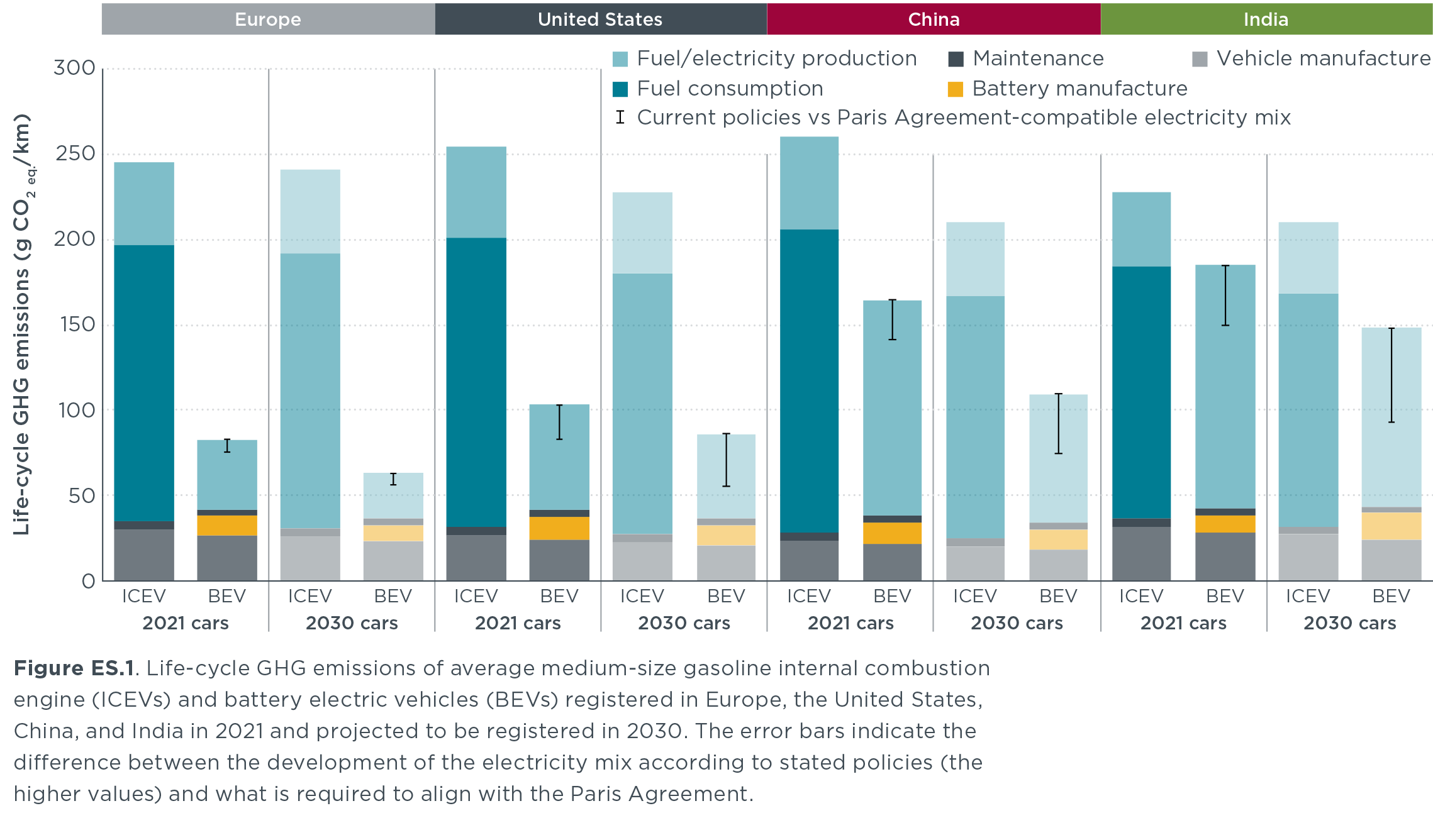Decarbonizing road transport by 2050: Zero-emission pathways for passenger vehicles
White paper
A global comparison of the life-cycle greenhouse gas emissions of combustion engine and electric passenger cars
This wide-ranging life-cycle assessment (LCA) examines the greenhouse gas (GHG) emissions of passenger cars, including SUVs. Performed separately and in depth for Europe, the United States, China, and India, the analysis captures the differences among those markets, which are home to about 70% of global new passenger car sales. It considers present and projected future GHG emissions attributable to every stage in the life cycles of both vehicles and fuels, from extracting and processing raw materials through refining and manufacture to operation and eventual recycling or disposal.
In addition to its global scope, the study is methodologically comprehensive in considering all relevant powertrain types, including plug-in hybrid electric vehicles (PHEVs), and an array of fuel types including biofuels, electrofuels, hydrogen, and electricity. The life-cycle GHG emissions of cars registered in 2021 are compared with those of cars expected to be registered in 2030. In addition, this study is distinct from earlier LCA literature in four key aspects:
- It considers the lifetime average carbon intensity of the fuel and electricity mixes, including biofuels and biogas. Based on stated policies, it accounts for changes in the carbon intensity during the useful lifetime of the vehicles.
- It considers the fuel and electricity consumption in average real-world usage instead of solely relying on official test values. This is especially important for assessing the GHG emissions of PHEVs.
- It uses recent data on industrial-scale battery production and considers regional battery supply chains. This results in significantly lower battery production emissions than in earlier studies.
- It incorporates the near-term global warming potential of methane leakage emissions of natural gas and natural gas-derived hydrogen pathways. Different from other GHGs, methane contributes several times more to global warming in the first 20 years after emission than is reflected by the 100-year global warming potential.
Results show that even for cars registered today, battery electric vehicles (BEVs) have by far the lowest life-cycle GHG emissions. As illustrated in the figure below, emissions over the lifetime of average medium-size BEVs registered today are already lower than comparable gasoline cars by 66%–69% in Europe, 60%–68% in the United States, 37%–45% in China, and 19%–34% in India. Additionally, as the electricity mix continues to decarbonize, the life-cycle emissions gap between BEVs and gasoline vehicles increases substantially when considering medium-size cars projected to be registered in 2030.
Highlights of the paper are in the fact sheets attached below, one covering the full scope of the analysis and the other, in German, focused on Europe. See here for the Europe-focused fact sheet in English. This work is also incorporated in a briefing that’s part of our work with the Zero Emission Vehicles Transition Council.

This paper was updated on November 11, 2022, to correct electricity mix values for certain countries in the European country-specific sensitivity in Figure 3.5.
Attachments
Global-LCA-passenger-cars-FS-EN-jul2021.pdf
Global-LCA-passenger-cars-FS-DE-jul2021.pdf
Global-LCA-passenger-cars-PR-jul2021.pdf
